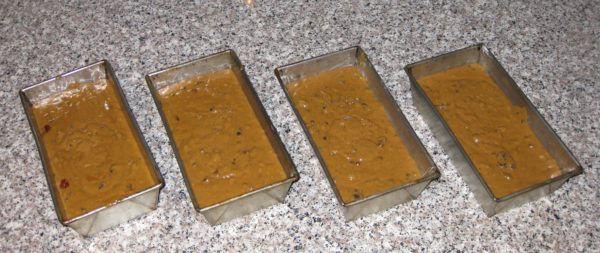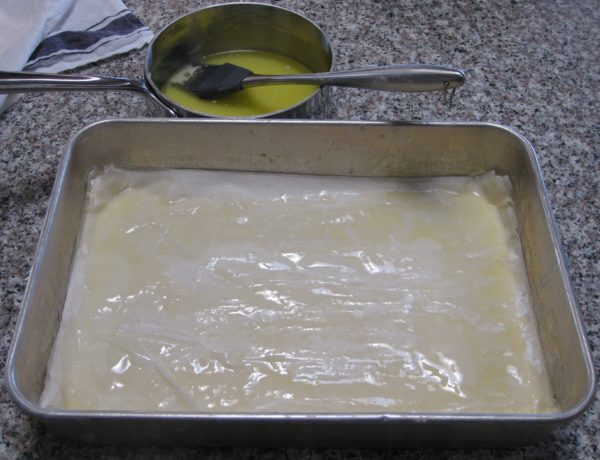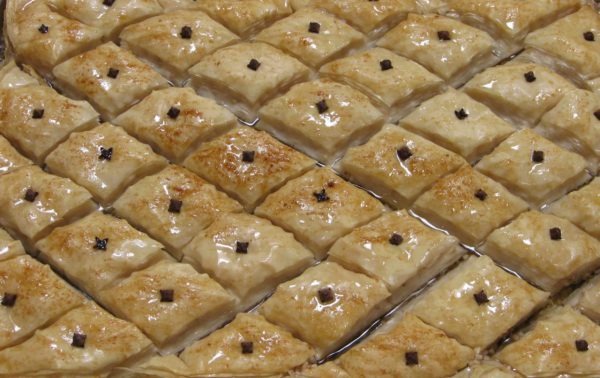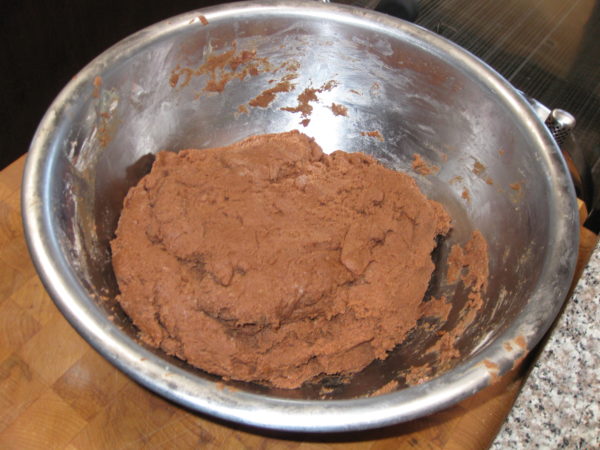September 5, 2018
In September 1972, at the age of 17, I went from the small town of Johnstown, Pennsylvania to Philadelphia to attend the University of Pennsylvania.
Little did I know how much my life was going to change, nor how sheltered I had been growing up in Johnstown. There were a few trips to Florida and California by car, and a portion of every summer spent in Atlantic City, but other than that my life mostly revolved around the family and happenings within a few hours’ drive of Johnstown.
A few weeks before I left for college, I got a note from Jon Rikoon who was to be one of my roommates. Jon lived on Long Island. I don’t think I’d ever been to New York at that point.

Another of my roommates (we had a three-bedroom, four-bed dorm “apartment”) was Chip Fleischmann, as in Fleischmann’s yeast. The fourth roommate only lasted the first semester and I simply can’t remember his name. (He kept to himself mostly.)
Join our mailing list and you’ll never miss a recipe again!
Early in freshman year, Jon started dating Gail Milgram. Gail spent a lot of time in our apartment and she and I became very good friends.
Gail’s relationship with Jon didn’t last beyond freshman year but our friendship did. We saw a lot of each other throughout our undergraduate years and for a few years thereafter while I was in medical school.
Our friendship remained strong. In fact, at one point early in medical school Gail and I had to temporarily stop spending time together as her boyfriend at the time was jealous of our relationship. Needless to say, he didn’t last!
Gail and I were in infrequent contact after my first couple of years in medical school. In fact, years could go by without contact but, somehow, we always managed to reconnect.
As the years did, in fact, go by, Gail officially changed her name to Goldie. She also became a rabbi.
A few months ago, out of the blue, just after I decided to post a recipe for the Jewish Apple Cake that (the then) Gail taught me how to make in college, I received an email from her.
Follow us on your social media platform of choice
She was in Europe for the summer and we set up a time to chat by video conference but her internet connection did not cooperate and we were unsuccessful in our attempts to chat. We’re planning another attempt at video conferencing when both of us are in the States later this fall. I’m looking forward to catching up with her.
In the meantime, I hope you enjoy what is now, officially, Rabbi Goldie’s Jewish Apple Cake!

| Prep Time | 30 minutes |
| Cook Time | 90 minutes |
| Passive Time | 1 hour |
| Servings |
people
|
- 3 3/4 cups all purpose flour
- 3 3/4 teaspoons baking powder
- 2 cups sugar
- 3 tablespoons sugar
- 1 1/4 cups vegetable oil preferably corn oil
- 5 eggs
- 1 tablespoon vanilla extract
- 1/3 cup orange juice
- 1 tablespoon orange juice
- 2 large apples
- 2 teaspoons ground cinnamon
- 5 tablespoons sugar
- 3/4 cup chopped walnuts optional
Ingredients
|

|
- Grease and flour a 10" tube pan with a removable bottom.
- Sift together the flour and baking powder.
- Peel the apples, cut them in quarters and remove the core.

- Slice the apples crosswise into 1/8 inch thick slices.

- Mix the apples and cinnamon and set aside.

- In the bowl of an electric mixer cream oil and 2 cups plus 3 tablespoons sugar.

- Add eggs one at a time beating after each addition.

- Add 1/3 cup plus 1 tablespoon orange juice and vanilla. Mix well.
- Add flour and baking powder mixture and mix well.

- Add 5 tablespoons of sugar to the apples and mix well.

- Pour half the batter into the prepared pan.

- Top the batter with half the apples.
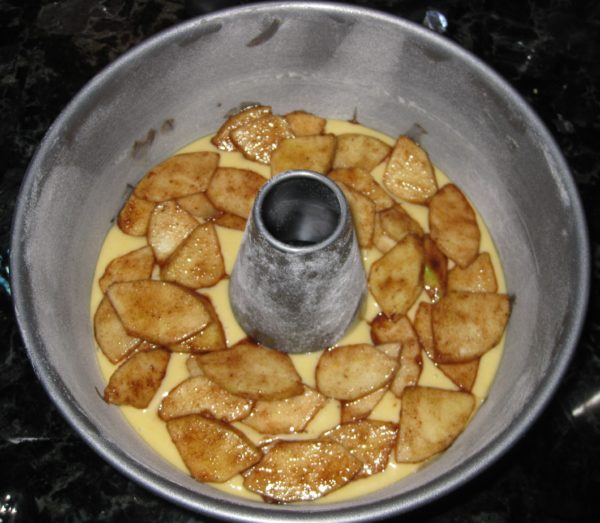
- Top the apples with half the walnuts, if using.

- Add the remaining batter and top with the remaining apples and walnuts, if using.

- Bake at 350°F for approximately 1 hour 40 minutes, until a tester inserted in the center comes out clean.
- Cool for 10 minutes on a rack. Remove from pan and cool completely.

Copyright © 2018 by Villa Sentieri, LLC. All rights reserved.










